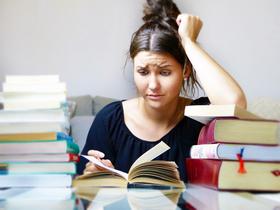- College of the Siskiyous, located on one of the most beautiful community college campuses in California, is recognized for its excellent programs in the humanities and arts, science and technology, and athletics.
School Highlights
College of the Siskiyous serves 2,325 students (26% of students are full-time).
The college's student-teacher ratio of 13:1 is lower than the state community college average of 32:1.
Minority enrollment is 44% of the student body (majority Hispanic), which is less than the state average of 77%.
Quick Facts (2025-26)
- Enrollment: 2,325 students
- In-state tuition: $1,146
- Out-state tuition: $6,450
- Student-teacher ratio: 13:1
- Minority enrollment: 44%
- Source: Integrated Postsecondary Education Data System (IPEDS)
School Overview
The teacher population of 175 teachers has stayed relatively flat over five years.
College of the Siskiyous
(CA) Community College Avg.
Carnegie Classification
Associate's Colleges: Mixed Transfer/Career & Technical-Mixed Traditional/Nontraditional
Baccalaureate/Associate's Colleges: Associate's Dominant
Institution Level
At least 2 but less than 4 years
At least 2 but less than 4 years
Institution Control
Public
Public
Total Faculty
175 staff
315 staff
School Calendar
Student Body
The student population of College of the Siskiyous has grown by 32% over five years.
The student-teacher ratio of 13:1 has increased from 7:1 over five years.
The College of the Siskiyous diversity score of 0.62 is less than the state average of 0.70. The school's diversity has declined by 5% over five years.
Total Enrollment
2,325 students
9,796 students
Student-Teacher Ratio
13:1
32:1
# Full-Time Students
597 students
1,259 students
# Part-Time Students
1,728 students
8,537 students
# Enrollment Undergraduate
232 students
242 students
# Full-Time Undergraduate Students
597 students
1,250 students
# Full-Time Graduate Students
n/a
63 students
# Part-Time Undergraduate Students
1,728 students
8,299 students
# Part-Time Graduate Students
n/a
10 students
Total Dormitory Capacity
154 students
121 students
% American Indian/Alaskan
3%
n/a
% Asian
4%
13%
% Hispanic
20%
47%
% Black
3%
7%
% White
56%
23%
% Hawaiian
n/a
1%
% Two or more races
7%
5%
% Non Resident races
1%
1%
% Unknown races
6%
3%
Diversity Score
0.62
0.70
College Completion Rate (Students who graduate in less than 4 years)
25%
42%
College Completion Rate (Students who graduate in 4 years or more than 4 years)
n/a
43%
Average Graduate Earnings (10 Years)
$30,700
$34,700
Tuition and Acceptance Rate
The public in-state tuition of $1,146 is less than the state average of $1,516. The in-state tuition has declined by 20% over four years.
The public out-state tuition of $6,450 is less than the state average of $6,779. The out-state tuition has declined by 32% over four years.
In-State Tuition Fees
$1,146
$1,516
Out-State Tuition Fees
$6,450
$6,779
Tuition Notes
$46 per unit for California residents
% Students Receiving Some Financial Aid
68%
85%
Median Debt for Graduates
$12,000
$10,500
Median Debt for Dropouts
$6,375
$6,239
Acceptance Rate
n/a
93%
Source: 2024 (or latest year available) Integrated Postsecondary Education Data System (IPEDS) , School Administrators
School Notes
- College of the Siskiyous, one of the most beautiful community colleges campuses in California, is located at the base of majestic Mount Shasta. This 250-acre campus is easily accessible off both Interstate 5 and Highway 97 in the town of Weed. There are more than 3,000 students enrolled at College of the Siskiyous. Facilities include residence halls, a 600 seat theater, football stadium, and a spacious library and media center, as well as life science labs, career & technical education and computer labs, and a number of general purpose classrooms. A staff of approximately two hundred administrative, instructional, and classified personnel help students obtain the best education possible. Exceptional successes by COS students have been achieved in music, drama, science, engineering, and athletics during the history of the school. The College is widely recognized for its excellent programs in the humanities and arts, sciences and technology, and in athletics. The setting, a natural environment of mountains, forests, lakes, and streams, serves as an outdoor workshop for many classes such as art, geology, the life sciences, and physical and recreational education. Opportunities for outdoor recreation and sports abound: hiking, camping, running, swimming, bicycle touring and mountain biking, rock and mountain climbing, hunting, fishing, and boating. Rafting and kayaking on nearby whitewater rivers such as the Klamath and McCloud are special attractions. In winter, there is superb downhill and cross-country skiing, as well as snowboarding on beautiful Mt. Shasta.Opportunities for outdoor recreation and sports abound: hiking, camping, running, swimming, bicycle touring and mountain biking, rock and mountain climbing, hunting, fishing, and boating. Rafting and kayaking on nearby whitewater rivers such as the Klamath and McCloud are special attractions. In winter, there is superb downhill and cross-country skiing, as well as snowboarding on beautiful Mt. Shasta.
Frequently Asked Questions
How much does College of the Siskiyous cost?
College of the Siskiyous's tuition is approximately $1,146 for In-State students and $6,450 for Out-State students.
Recent Articles

The Rise of Technical and Vocational Training in 2025
Explore the 2025 surge in technical and vocational training—enrollment, policy, costs, and why this path is gaining ground for students and parents.

Stackable Credentials: How Community Colleges Advance Careers
Discover how community colleges use stackable credentials to build career pathways, boost earnings, and enable lifelong learning in 2025.

High-Paying Jobs You Can Get with a Community College Degree
Discover top high-paying careers you can launch in 2025 with a community college (associate) degree and high-growth credentials in tech, healthcare and trades.









